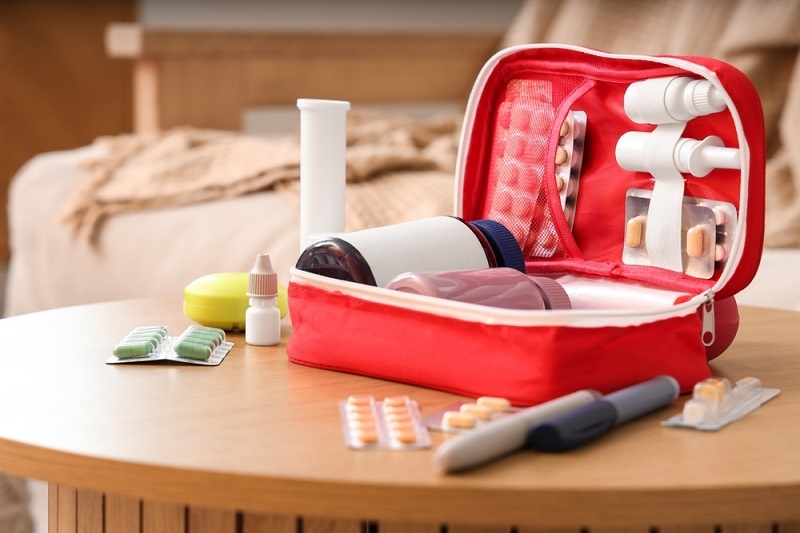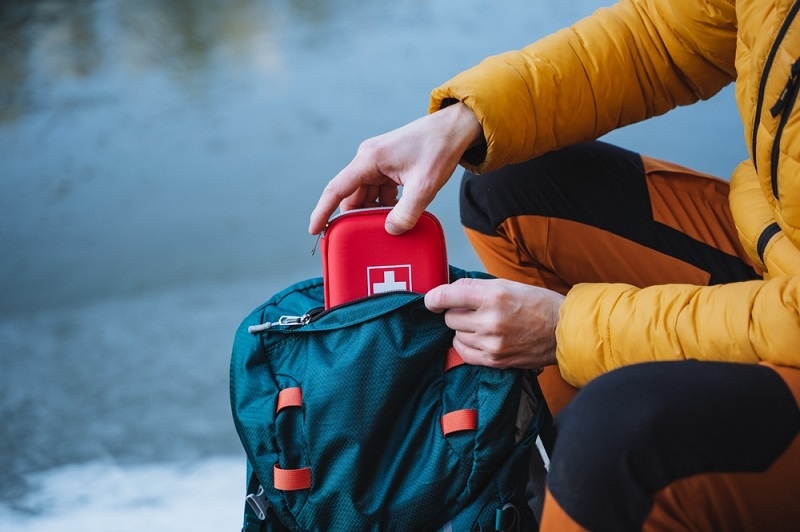
Travel is challenging and entertaining at the same time; however, it is associated with such risks as minor injury, sudden illness, or awkward accidents. It does not matter whether you are going on a road trip or you are flying halfway around the world, a first aid kit is a travel document that can mean everything. One minor health problem may be transformed into a major one very soon unless you are ready, and such things happen in those lands where medications are not accessible easily. So in this blog, we are going to discuss all that you need to know about a first aid kit for travel by telling you what is in it, how to pack and some tips about the best first aid kit to use in travel.
First aid kit is one of those things which one would have wished one would never need, but which will forever be appreciated having when something goes haywire.
At a place where you are not at home, particularly a foreign country or an isolated place, health facilities might not be readily accessible. You may also encounter language obstacles or time delays when finding a pharmacy. This is where a pocket first aid kit will be very helpful, which can be carried along on a trip.
When sightseeing, you may fall and sprain your ankle, or get a cut when camping. Keeping materials such as bandages, antiseptics, and pain relievers can assist you in managing small problems at the moment.
Your favorite painkiller or allergy medicine might not be available in another country. Carrying your essentials means you won’t need to rely on unfamiliar or unavailable products.
A well-stocked first aid kit for traveling lets you handle health concerns quickly without wasting time searching for help.
Packing the right items in your first aid kit ensures you’re ready for any minor medical situation while away from home.
Here’s a breakdown of the most important first aid kit essentials for travelling:
These items help treat cuts, scrapes, and small wounds.
Pain and fever can disrupt your travel plans and make it hard to enjoy your trip. It's a good idea to carry basic over-the-counter remedies to help manage common issues like headaches, body aches, or mild fever while you're on the go.
Even if you don’t usually have allergies, new environments, weather changes, or unfamiliar foods can sometimes cause unexpected reactions. It’s smart to carry basic allergy relief items to help manage symptoms like itching, rashes, or mild swelling.
Travel can mess with your stomach due to different food, water, or bacteria.
Changing weather or air travel can lead to colds or sore throats.
If you take daily medicines, carry enough to last your trip and some extra in case of delays. Include:

Planning an overseas trip? Picking the best first aid kit for international travel is important because international travel adds more health risks than local trips. Here’s how to make sure your kit is travel-friendly and fully prepared:
You don’t want to carry a bulky box around. Look for a small first aid kit for travel that fits easily in your backpack or suitcase but still holds all the essentials.
Your kit should protect the items inside from moisture, heat, and impact. Waterproof pouches or zippered bags are ideal.
Going hiking? Include blister pads and bug spray. Traveling to a tropical country? Pack mosquito repellent and malaria tablets (if needed).
Research health risks for your destination before packing.
A messy kit can make it hard to find what you need in an emergency. Organize your first aid kit for traveling in a way that’s easy to use.
Separate items into categories like medicine, bandages, or allergy treatments using small pouches or zip-top bags.
Use labels or stickers to identify items quickly. Especially useful if you’re sharing the kit with friends or family.
Having the right tools is just one part of being prepared. Here are a few tips to make your first aid strategy more effective:
Medicines and creams expire quickly. Check dates and replace old items before each new journey.
If you use anything from the kit, restock it once you return. It’s easier than rushing before your next trip.
If you’re traveling with family or friends, show them where the kit is and what it contains. It could save time during emergencies.
You have two options: buy a pre-made travel first aid kit or make one yourself. Let’s compare both:
Pros:
Cons:
Pros:
Cons:
Your destination and activities will affect what you need. Here’s a quick guide for different situations:
Travelling is unpredictable. On the one hand, it is filled with happiness, exploration, and experiences that can not be forgotten; on the other hand, it is possible to get sudden diseases or accidents. Your pocket first aid travel medical equipment is your personal insurance policy, small, basic, but with plenty of power.
Select a personal kit that fits your travel arrangements, health condition, and destination. It is better to have a small first aid kit when traveling and a special case that you prepare, or have a special one that cannot be mistakenly used. Therefore, as you are preparing to lock your bag up on your next travel, take time and prepare your first aid kit travel items, as health can never be left behind.
This content was created by AI